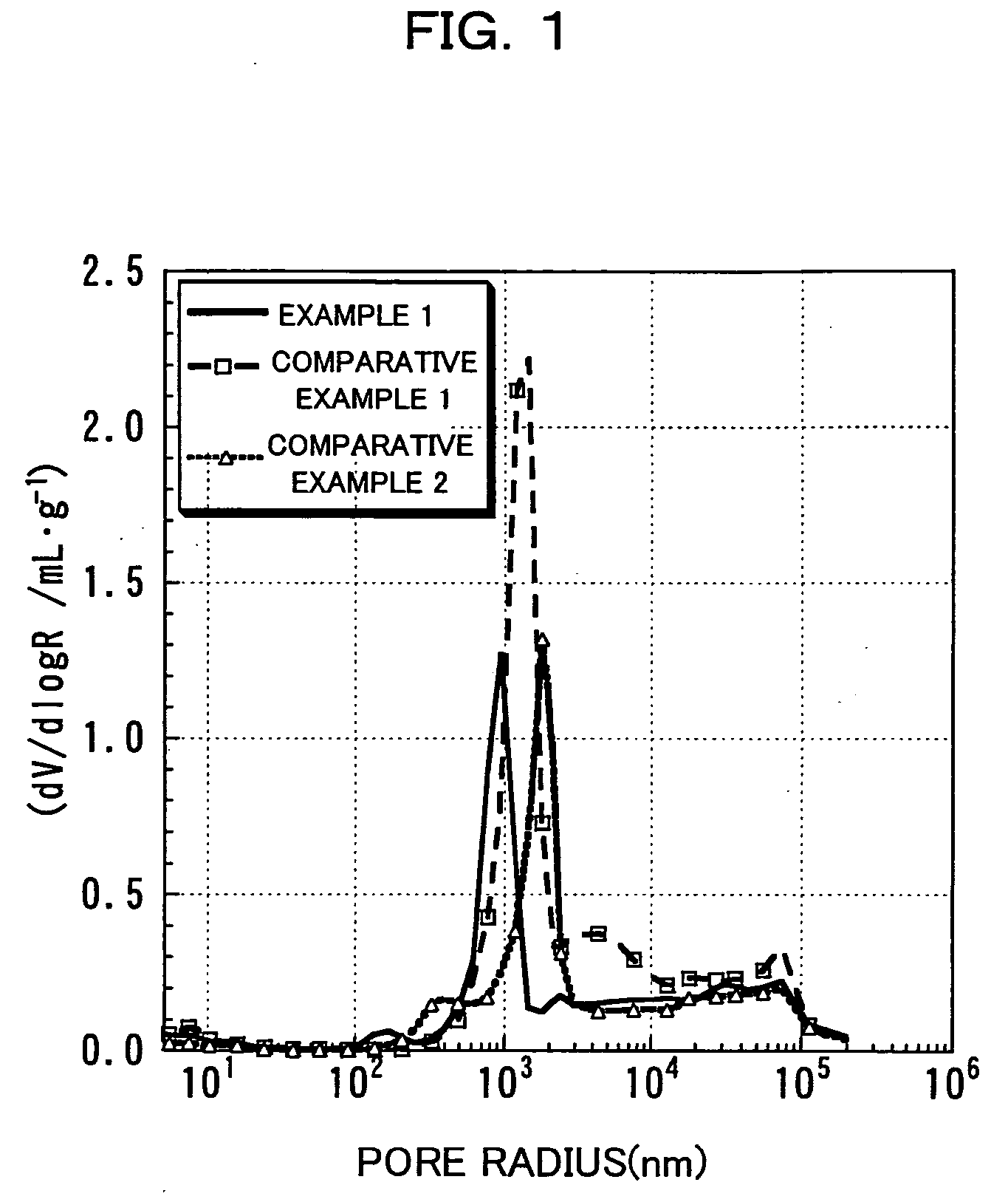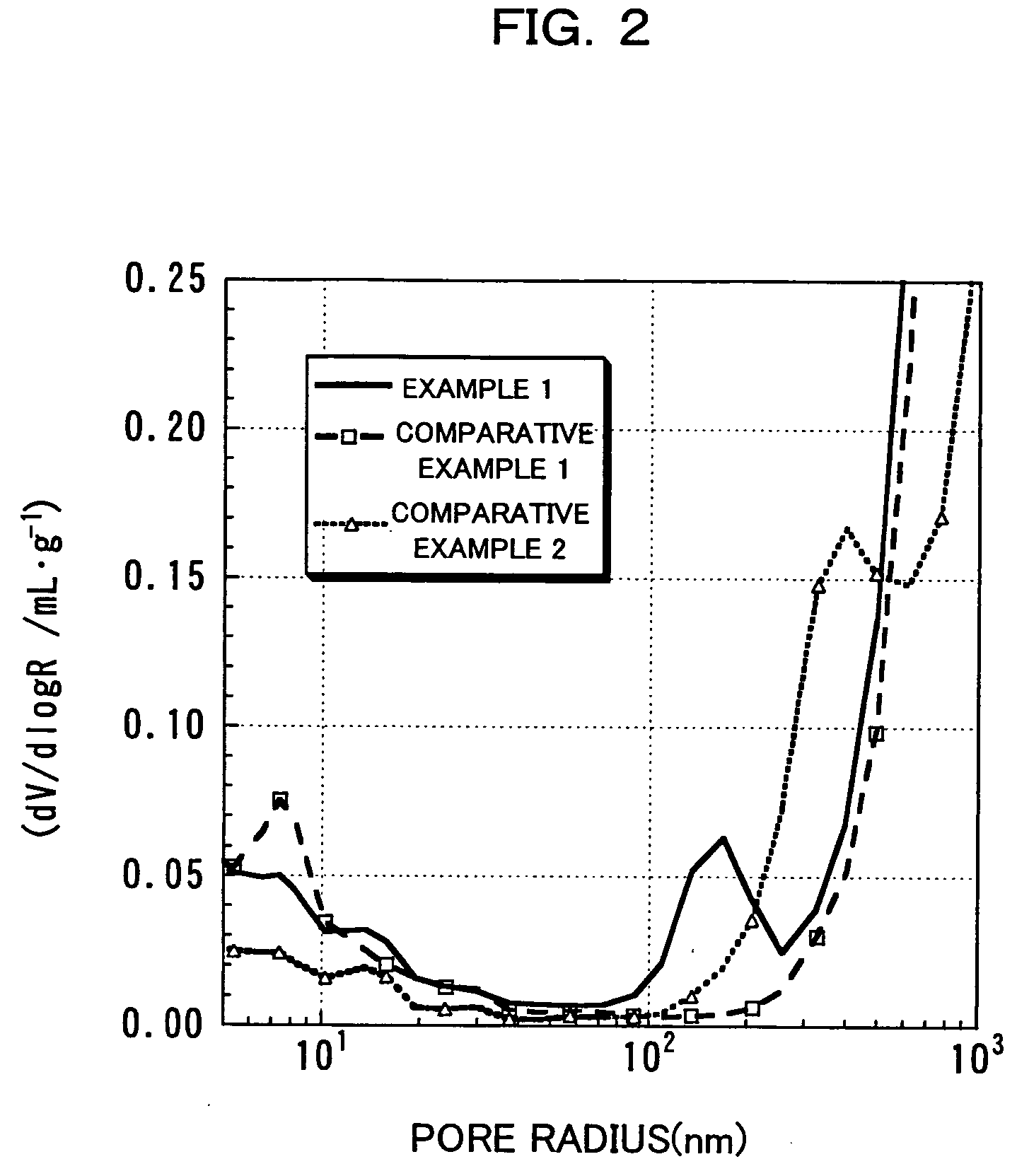Lithium composite oxide particle for positive electrode material of lithium secondary battery, and lithium secondary battery positive electrode and lithium secondary battery using the same
a lithium secondary battery and composite oxide technology, applied in the direction of manganates/permanentates, cell components, electrochemical generators, etc., can solve the problems of reducing the packing efficiency of the positive electrode active material into the positive electrode, restricting the battery capacity, etc., to improve the low-temperature load characteristics of the resultant, excellent coatability, excellent low-temperature load characteristics
- Summary
- Abstract
- Description
- Claims
- Application Information
AI Technical Summary
Benefits of technology
Problems solved by technology
Method used
Image
Examples
example 1
[0196] NiO, Co(OH)2 and Mn3O4, which serve as nickel, cobalt and manganese materials, respectively, were weighed so that the mole ratio of Ni:Co:Mn is 0.33:0.33:0.33. Pure water was added to the weighed materials to prepare a slurry. The slurry was then wet-milled by means of a circulation-type medium-stirring-type wet bead mill with stirring until the median particle diameter of the solid content in the slurry becomes 0.3 μm.
[0197] The slurry was then spray dried with a spray dryer to form approximately spherical granulated particles having the diameter of about 5 μm and consisting of the nickel, cobalt and manganese materials. To the granulated particles thus obtained, LiOH powder having the median diameter of 3 μm was added so that the mole ratio of Li becomes 1.05 relative to the total number of moles of Ni, Co, and Mn, followed by mixing with a high-speed mixer. Thus, the mixture powder of the granulated particles of the nickel, cobalt, and manganese materials and the lithium ...
example 2
[0199] NiO, Co(OH)2, Mn3O4 and LiOH.H2O, which serve as the nickel, cobalt, manganese and lithium materials, respectively, were weighed so that the mole ratio of Ni:Co:Mn:Li is 0.33:0.33:0.33:0.05. Pure water was added to the weighed materials to form a slurry. The slurry was wet-milled by means of a circulation-type medium-stirring-type wet bead mill with stirring until the median particle diameter of the solid content becomes 0.20 μm.
[0200] The slurry was then spray dried with a spray dryer to form approximately spherical granulated particles having the diameter of about 6 μm and consisting of the nickel, cobalt, manganese, and lithium materials. To the granulated particles thus obtained, LiOH powder having the median diameter of 3 μm was added so that the mole ratio of Li be 1.00 relative to the total number of moles of Ni, Co, and Mn, followed by mixing with a high-speed mixer. Thus a mixture powder of granulated particles which is made of Ni, Co, Mn and the lithium material an...
example 3
[0201] The same operation as in Example 2 was carried out, except that CoOOH was used as the cobalt material, to thereby obtain lithium composite oxide particles (hereinafter called “the lithium composite oxide particles of Example 3”).
PUM
| Property | Measurement | Unit |
|---|---|---|
| pressure | aaaaa | aaaaa |
| pore radius | aaaaa | aaaaa |
| pore radius | aaaaa | aaaaa |
Abstract
Description
Claims
Application Information
 Login to View More
Login to View More - R&D
- Intellectual Property
- Life Sciences
- Materials
- Tech Scout
- Unparalleled Data Quality
- Higher Quality Content
- 60% Fewer Hallucinations
Browse by: Latest US Patents, China's latest patents, Technical Efficacy Thesaurus, Application Domain, Technology Topic, Popular Technical Reports.
© 2025 PatSnap. All rights reserved.Legal|Privacy policy|Modern Slavery Act Transparency Statement|Sitemap|About US| Contact US: help@patsnap.com



